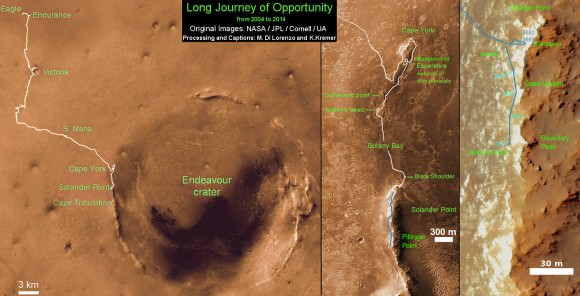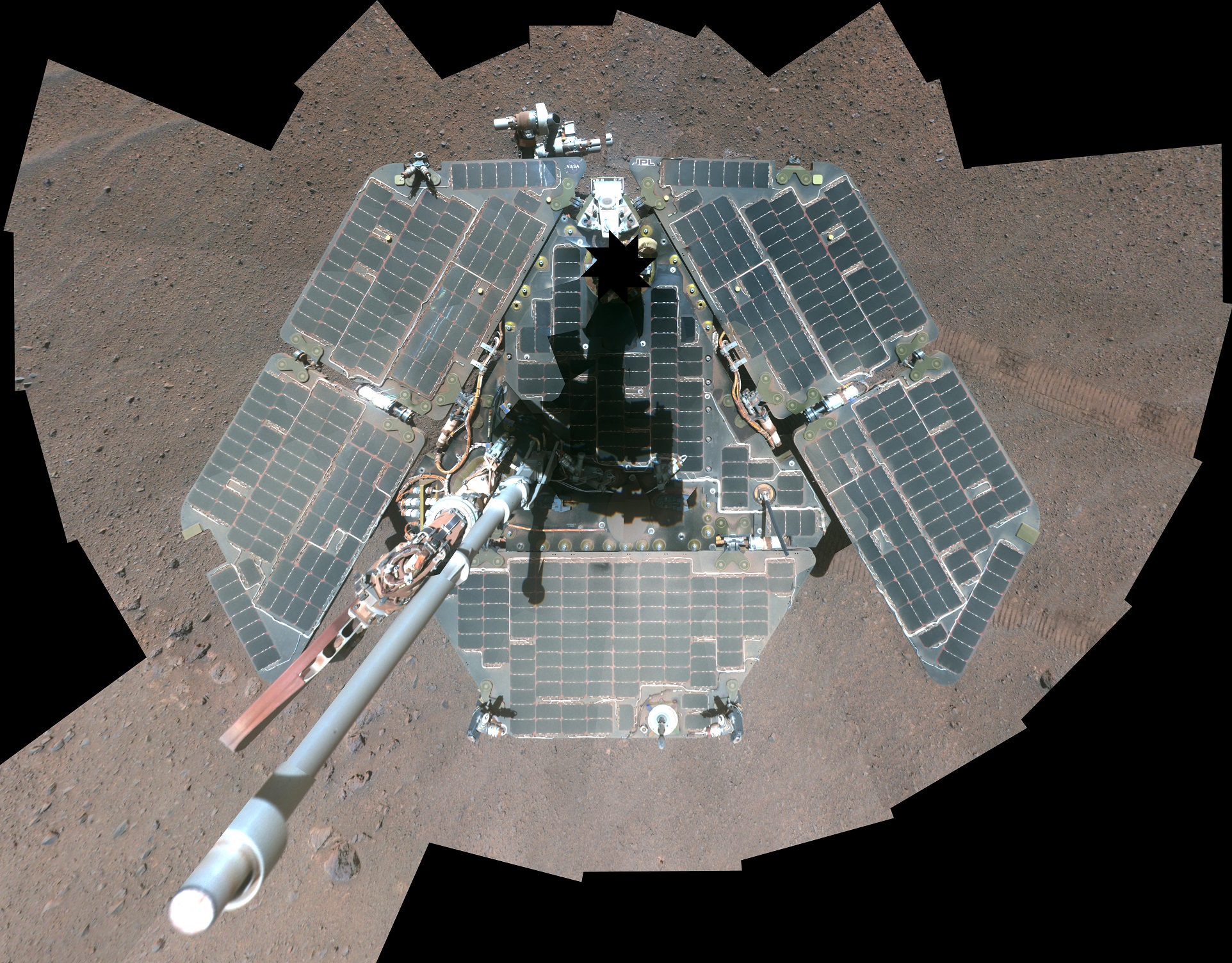In fantastic news for the long-running Opportunity mission on Mars, NASA says the rover’s much-needed memory reset worked out perfectly. The rover was unable to perform science or beam pictures back to Earth because portions of its flash memory — which can store information even when the rover is turned off — were beginning to wear out.
The reboot means the rover is soon going to be on the move again as it continues exploring the rim of Endeavour Crater, tacking on nearly a marathon of miles that Opportunity has racked up on Mars since 2004.
“The rover’s Flash file system was successfully reformatted on Sol 3773 (Sept. 4, 2014),” NASA wrote in an update on the Mars Exploration Rover website late last week. “The Flash space available is slightly smaller (<1%) than before the reformat, consistent with the reformatting process flagging some bad cells to avoid.”

After performing related activities to the reformat on Sept. 6 and 7, controllers tried to take Opportunity out for a drive. They decided to stop shortly after beginning on Sept. 9 because the visual odometry Opportunity was using wasn’t enough for navigation. The controllers plan to try it again, using different landmarks next time. Current odometer on the rover: 25.28 miles (40.69 kilometers).
Sept. 9 marked the 3,778th Martian day or “sol” that Opportunity has been at work on Mars. The rover was originally designed to last three Earth months on the Martian surface, but is still performing drives and science in its 11th year. (The rover’s twin, Spirit, died in a sand trap after sending its last transmission March 22, 2010.)
Opportunity, however, is facing funding challenges on Earth as NASA and its political stakeholders weigh which of the agency’s long-term missions should continue.


According to SpaceNews, NASA has formally given Opportunity an extension, though they may have to cut back some activity.